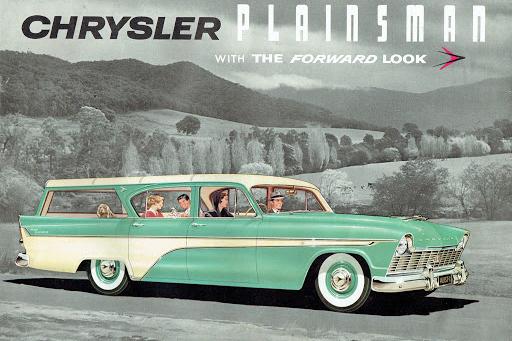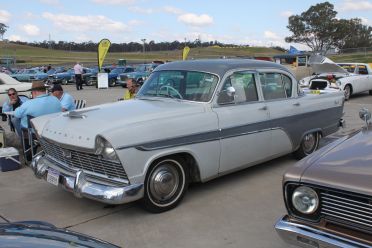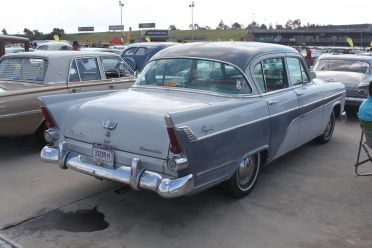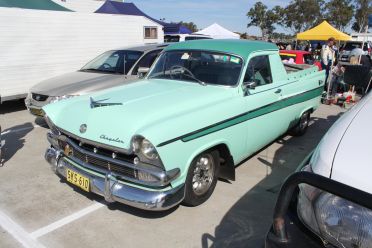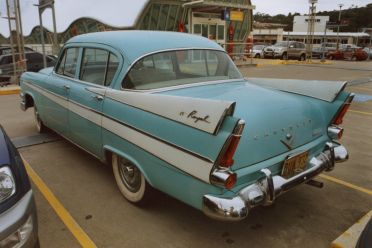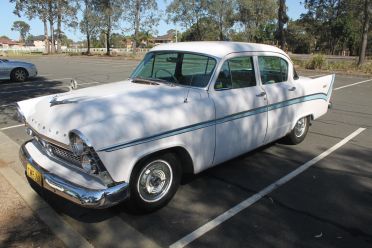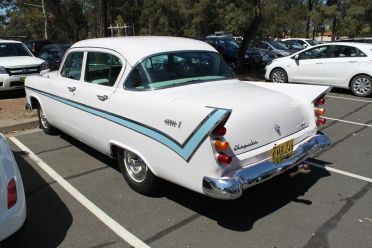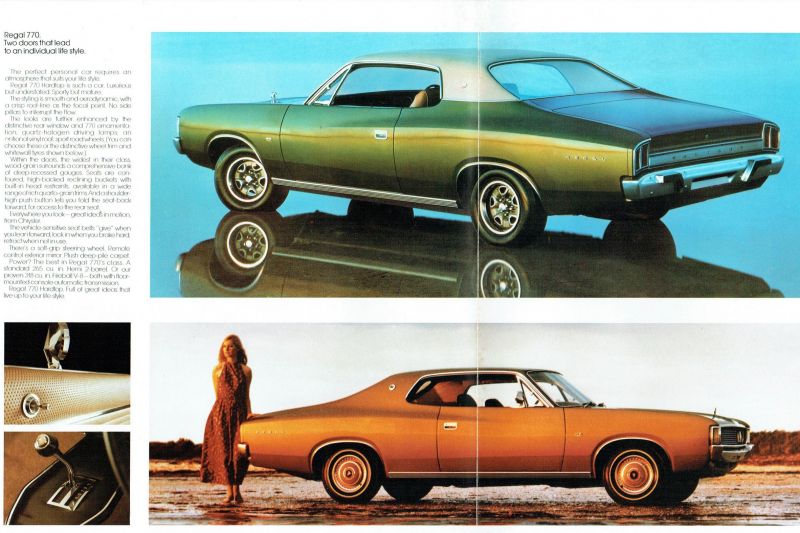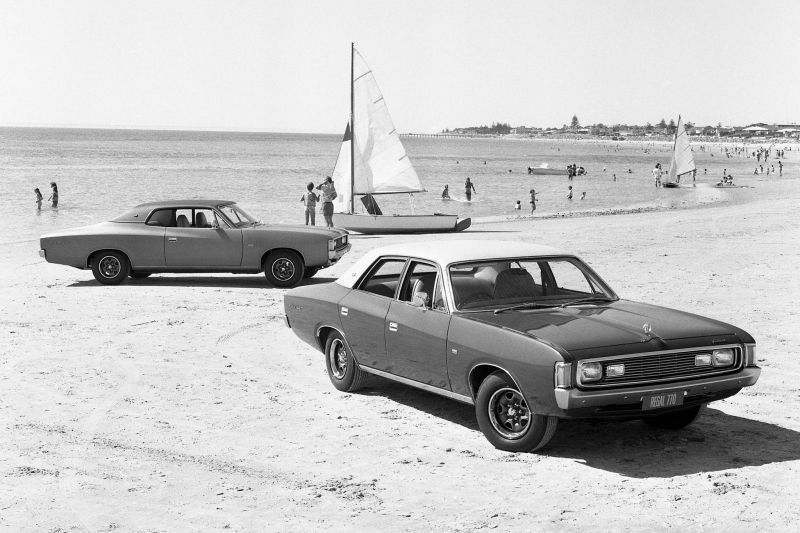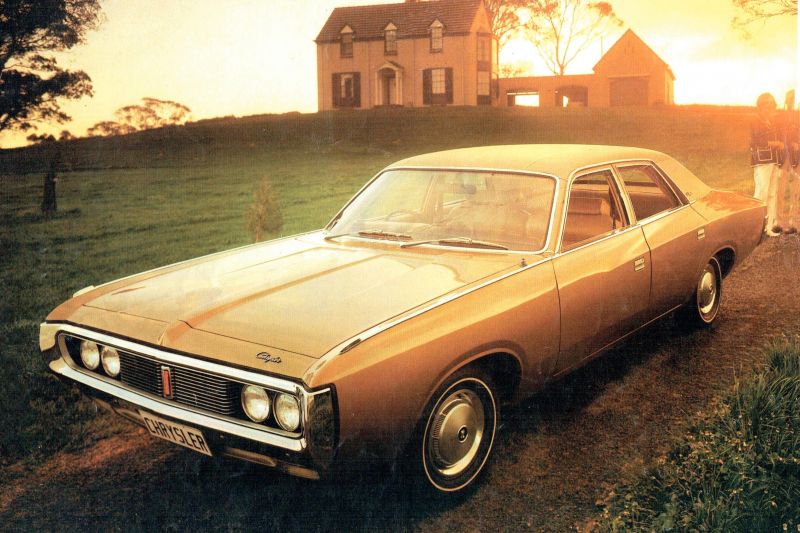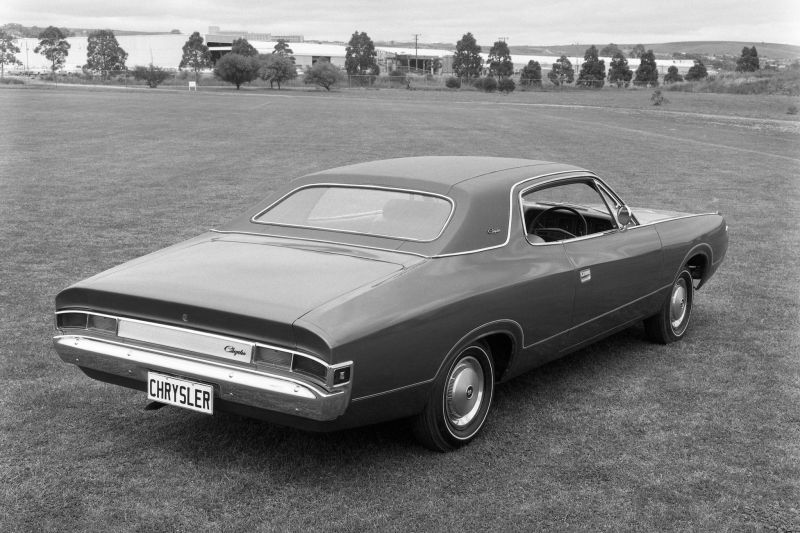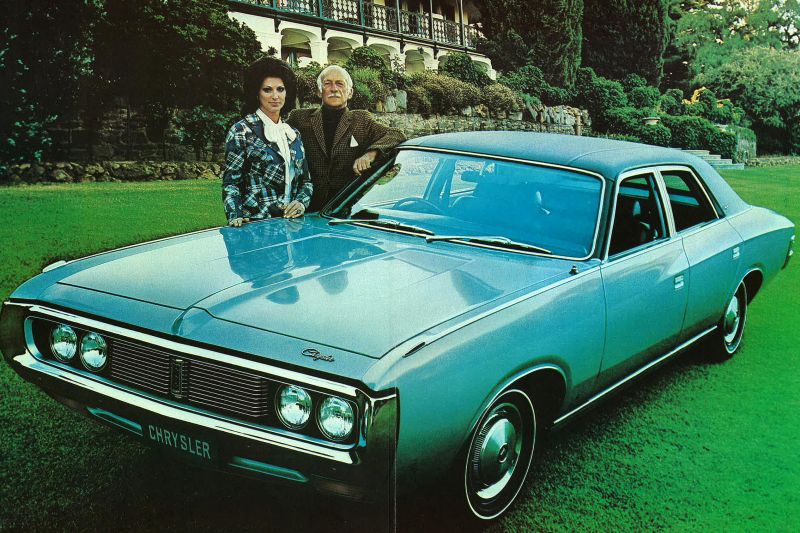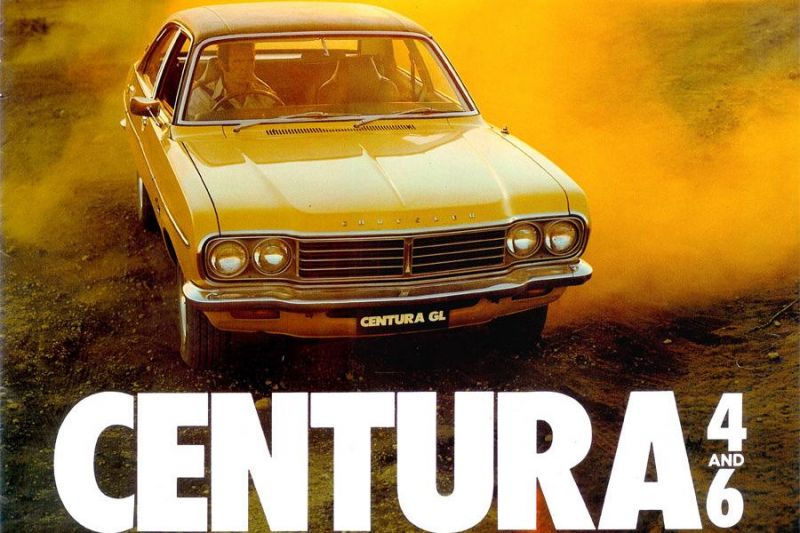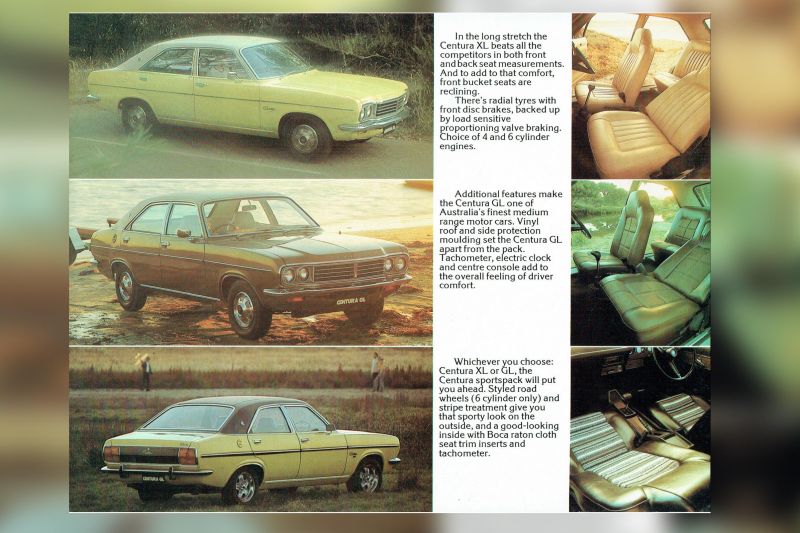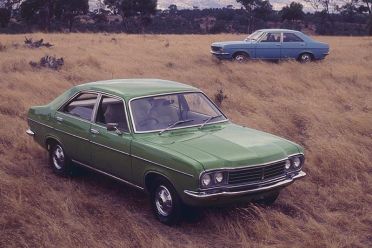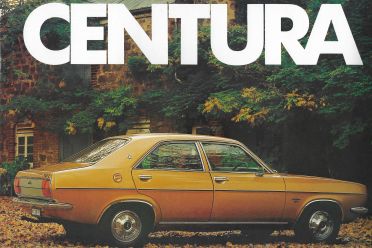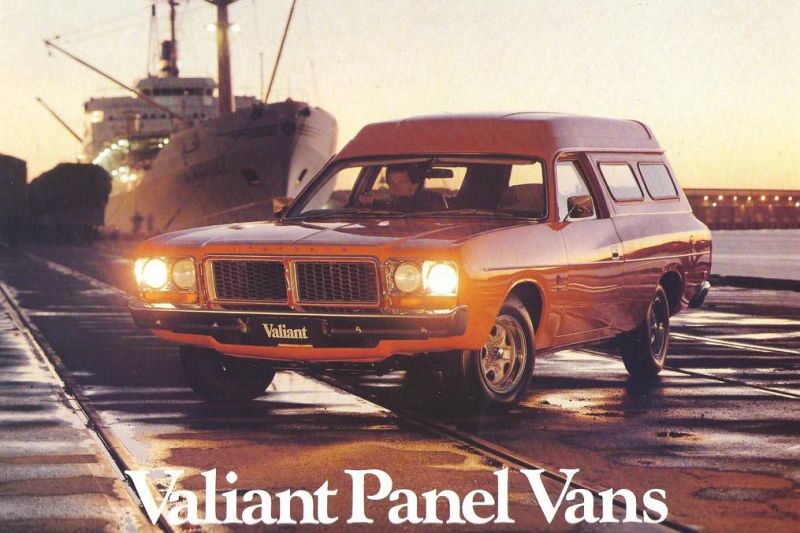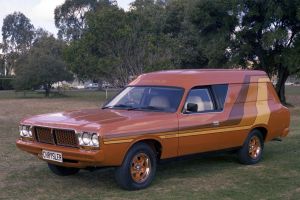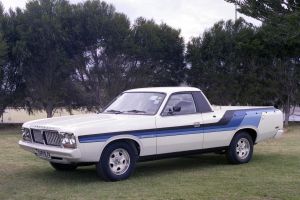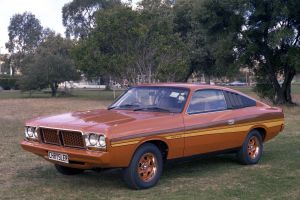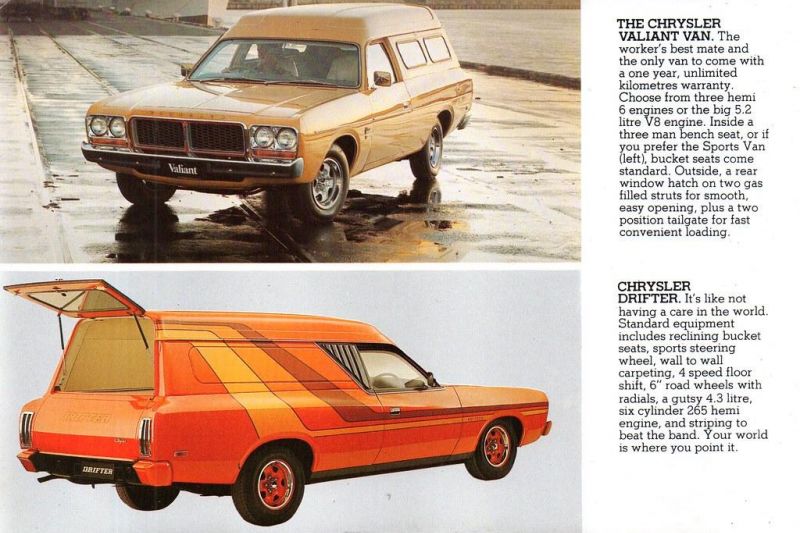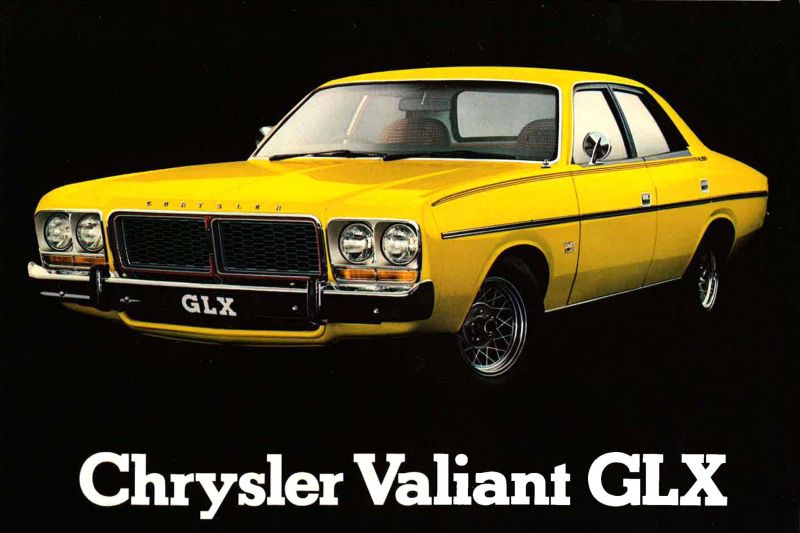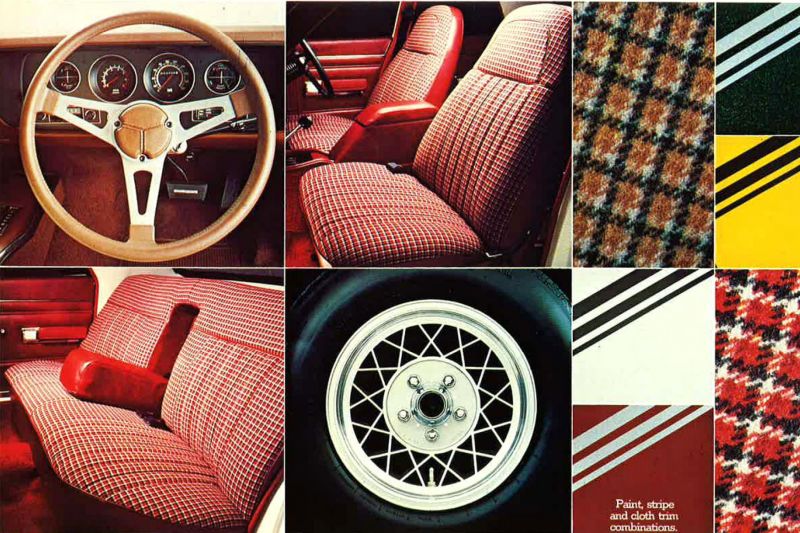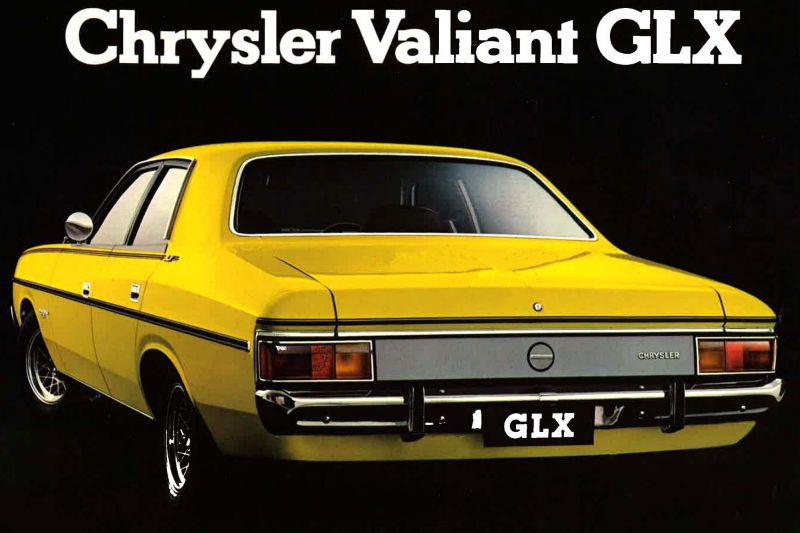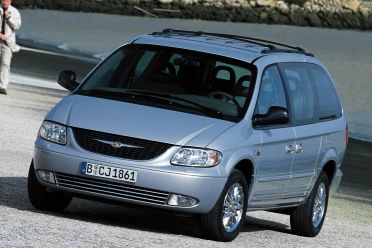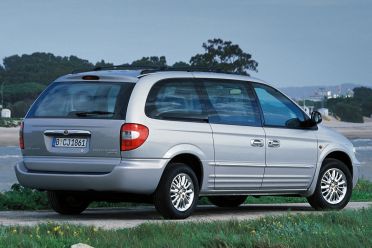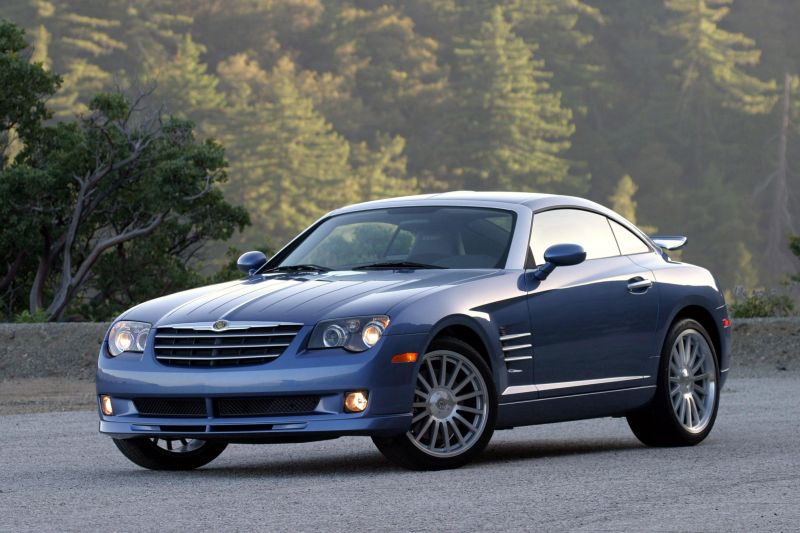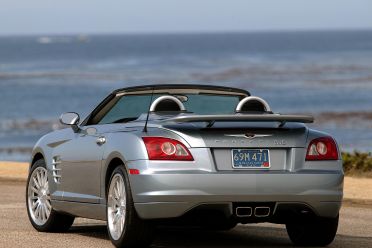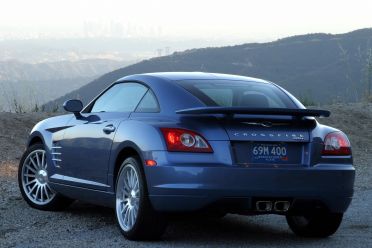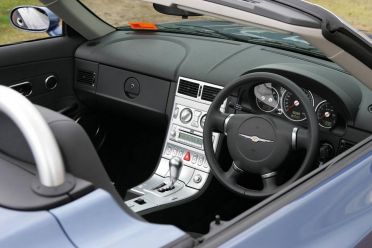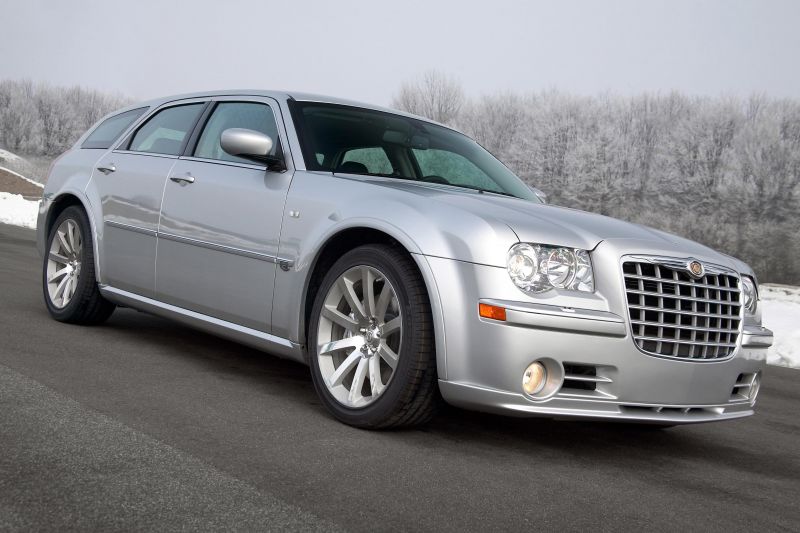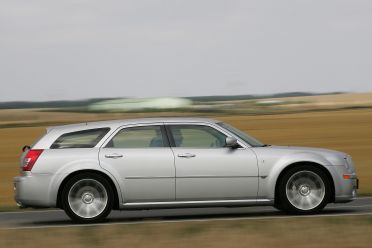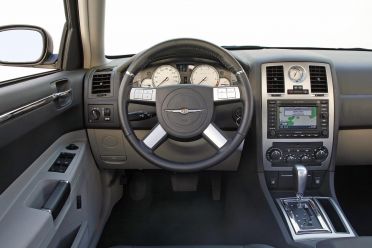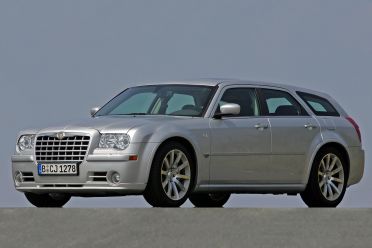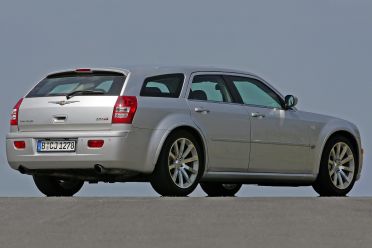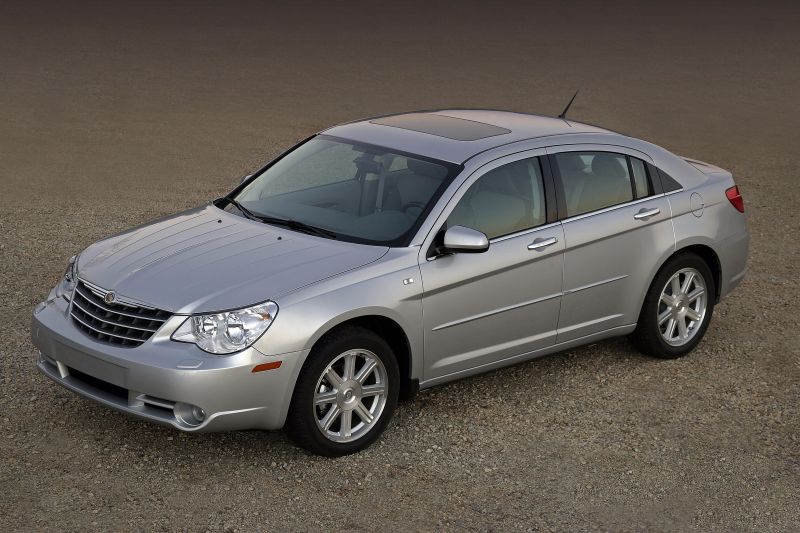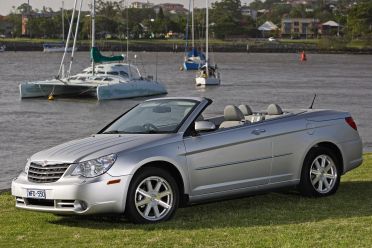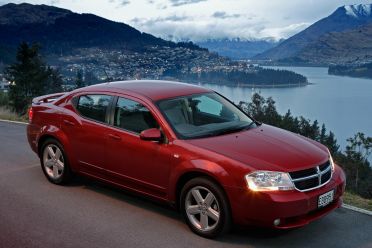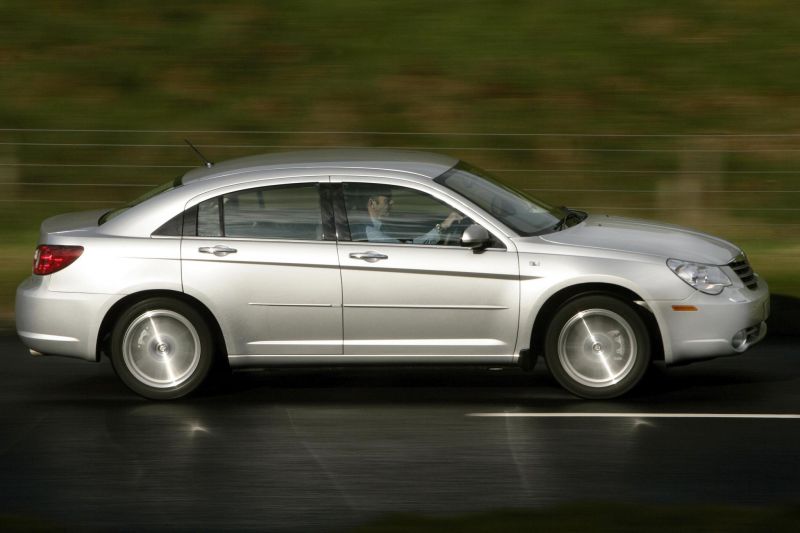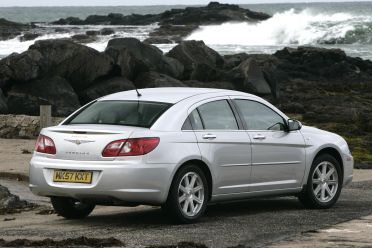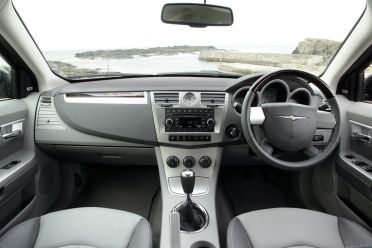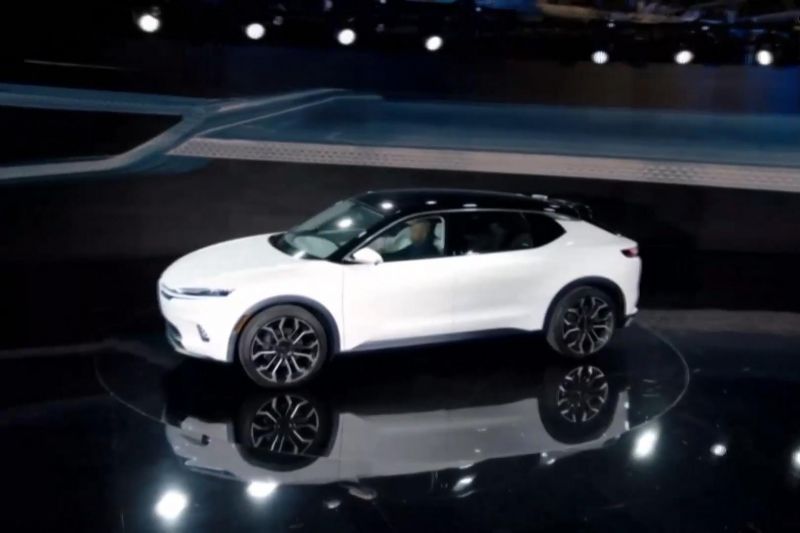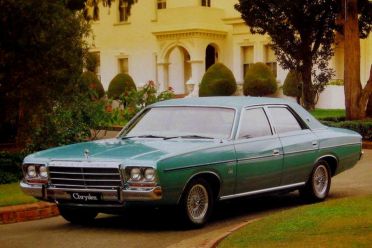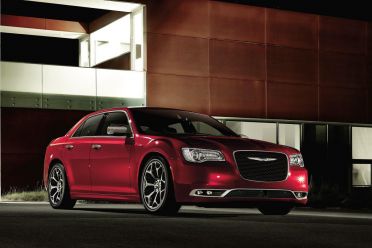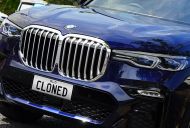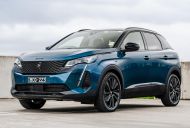When the last Chrysler Valiant rolled off the line at what had become the Mitsubishi factory at Tonsley Park, it was the end of an era. It wasn’t the end of the Chrysler brand in Australia, however.
Note: With news this week of Chrysler’s departure from Australia, we thought it was a good time to re-post this old feature. It originally ran in early 2021.
The brand returned in the mid-1990s and later enjoyed some success with the PT Cruiser and the 300, a modern-day Valiant if there ever was one.
What’s surprising is the Chrysler 300, a rival for the Ford Falcon and Holden Commodore like its Valiant ancestor, ended up outliving its large Aussie rivals. It’s a strange quirk of history, but the Chrysler brand has certainly enjoyed a few of those.
With the brand being retired from the Australian market, let’s take a look at 10 Chryslers sold in Australia you might have forgotten about.
Chrysler Royal, Plainsman and Wayfarer
In 1957, the Chrysler Corporation introduced new Chrysler, DeSoto, Dodge and Plymouth models with a striking new look that featured dramatic tailfins, referring to the design as Forward Look. Though these suffered from a raft of build quality maladies, they looked longer, lower, wider and flashier than the still quite handsome 1956 models.
What a pity we missed out on them, with Chrysler Australia lacking the money to localise them and instead introducing the Chrysler Royal that was more Backward Look in appearance.
Though there were plans to introduce a new 1957 model under the Plymouth, DeSoto and Dodge nameplates, Chrysler Australia instead made the call to sell the new car under the Chrysler brand name. The range consisted of the Royal sedan, Plainsman wagon and Wayfarer ute, all of which dusted off names from the Chrysler Corporation’s back catalogue.
There were attempts to align the Royal with its flashier North American cousins with its prominent tail fins but it was clear this was a reheated version of the Plymouth Cambridge and Cranbrook, DeSoto Diplomat and Dodge Kingsway that it replaced, a body that dated back to 1953.
Available engines consisted of 3.8-litre and 4.1-litre inline sixes, the latter available with a two-speed push-button automatic transmission that was ahead of its time. A 5.1-litre V8 engine was introduced shortly after the Royal’s launch, while an AP2 facelift in 1958 featured a revised front end with unusual double fins.
The Plainsman was axed after only 200-300 had been built, with only the Royal sedan and Wayfarer ute continuing into the final AP3 facelift in 1960. With the AP3, vertically-stacked headlights were added while the stacked tail lights resembled those of the 1959 DeSoto. To American eyes, the AP3 Royal must have looked peculiar, like a child trying on his father’s shoes.
This curious Australian adaptation had to contend with the Plymouth Belvedere and DeSoto Firesweep in 1959, and then the Dodge Phoenix (née Dart) in 1960, all of which were assembled from completely knocked down (CKD) kits. The real nail in the Royal’s coffin, however, was the introduction of the Valiant in 1962, leading the Royal to abdicate in 1964.
Chrysler Valiant VH and VJ hardtop
It’s hard to imagine there was a time when a large, Australian-built car was available in two different coupe body styles at the same time, but that was precisely the case with the Chrysler Valiant from 1971 until 1975.
A hardtop coupe first appeared in 1969 with the VF series Valiant, becoming the longest coupe ever built in Australia – keep in mind the Americans considered the Valiant a compact!
The 1971 VH Valiant was the first fully Australian-designed Valiant series and, while it’s best known for the Valiant Charger that at one stage accounted for 50 per cent of Valiant sales, the range also offered the Valiant Hardtop.
It was one of the seven new Valiant bodies and a whopping 56 variants developed as part of the $22 million VH program. Although less aggressively styled than the Charger, it looked thoroughly contemporary with its flowing, coke-bottle contours and more than a hint of 1971 Dodge Charger in its flanks. Indeed, the entire VH range put the stodgier American-market Valiant to shame.
Though it was 76mm shorter than its predecessor, it rode a 100mm longer wheelbase than the VH sedan. Unlike the sedan, it was available only in upper-spec Regal and Regal 770 models and commanded a $70 premium over the equivalent sedans. Engine options consisted of Chrysler Australia’s Hemi 4.0-litre and 4.3-litre inline sixes, with a 5.2-litre optional on the plusher Regal 770 that featured a standard buckets-and-console set-up inside. Chrysler also used the hardtop body for the new Chrysler by Chrysler flagship – more on that later.
As a coupe without any sporting pretensions, it just didn’t click with Australian buyers. This wasn’t the United States, where coupes were hugely popular in the 1970s and in some hot-selling vehicle lines – the Oldsmobile Cutlass, for example – the coupe would outsell the sedan.
Despite slow sales, however, the hardtop body continued with the VJ facelift even as Chrysler, in light of declining market share, culled a raft of models including the sporty Pacer and Charger R/T and sports/luxury Regal 770.
The VJ series would be the hardtop’s last. Chrysler Australia produced 67,800 VH Valiants and 90,865 VJs, of which 17,918 and 10,509 were Chargers.
As for the hardtop, Chrysler manufactured just 1970 in total across both series.
Chrysler by Chrysler
There are few names in automotive history as bizarre as Chrysler by Chrysler. If Chrysler was trying to add an air of luxury to its flagship line, calling it Chrysler twice wasn’t the way to do it – though by the 1970s still a premium brand in the US, its use on everything from utes to family wagons in Australia had been bringing it down to the same level as Ford and Holden in Australia.
The Chrysler by Chrysler replaced the VIP as the flagship of the Australian Chrysler line. Like its predecessor, it added a longer wheelbase and a more luxurious interior to the humble Valiant sedan. Unlike the VIP, however, there was arguably a more serious attempt at visually distinguishing the Chrysler from the humble Valiant.
The extended VH Valiant range may have been the first fully Australian-designed Valiant series but the American influence was unmistakable, particularly with the CH Chrysler by Chrysler and its Dodge Coronet-esque chrome loop-type front bumper.
It served as Chrysler’s rival to the new Statesman from Holden, as well as the Ford Fairlane, both of which had more than a few design cues shared with American-market GM and Ford models. Like the VF and VG VIP, the Chrysler’s wheelbase was stretched from the regular Valiant sedan. In this case, it grew from 2820mm to 2921mm. This was identical to the Valiant hardtop, which was also available as a Chrysler by Chrysler.
Standard equipment included full carpeting, a split front bench, and power steering, windows and front disc brakes, while a power driver’s seat was optional for the first time on an Australian car.
A 4.3-litre Hemi inline six was standard but the real news was the optional engine: a 360 cubic-inch (5.9-litre) V8, mated to an imported Torqueflite three-speed automatic. Either a sedan or hardtop with the V8 and all options ticked, including air-conditioning and a vinyl roof, came to $5820, or almost exactly double the base price of an entry-level Valiant sedan.
The CH received some minor tweaks and became the CJ in 1973, though the hardtop got the axe; reportedly, only 480 coupes were built. There was one final update in 1975, the CK, and the 5.9-litre V8 was replaced with the smaller 5.2-litre the following year.
Just a few months later, Chrysler pulled the plug on the Chrysler by Chrysler and replaced it with the Regal SE, a plusher version of the Valiant but with a regular-length wheelbase.
Chrysler Centura
The Centura was an unsuccessful version of a car that wasn’t much of a success in any market it was sold in.
It was first introduced in Europe in 1970 as the Chrysler 180. Chrysler Europe had been established in 1967 following the American automaker’s acquisition of a large stake in French automaker Simca in 1958 and the British Rootes Group in 1964. The 180 was developed as a new flagship sedan for both the European and UK line-ups, filling a void left by the Humber Hawk’s axing in 1967 and slotting above existing sedans like the Simca 1501 and Hillman Hunter.
When it arrived here in 1975, complete with tweaked styling and a new Centura name, the sedan filled a gap between Chrysler Australia’s Mitsubishi-sourced models and the large Valiant, with the amount of local content sitting somewhere in between. It had reportedly been set to arrive in 1973, but trade union workers refused to handle anything French as France had been controversially testing nuclear weapons in the Pacific Ocean.
Like Ford, Holden and Leyland had done with their rival Cortina, Torana and Marina in Australia, Chrysler shoehorned in bigger six-cylinder engines – the Valiant’s 3.5-litre and 4.0-litre Hemi sixes – which necessitated a reworked, longer front end. Early in the 180’s development program, a V6 engine had been planned but scrapped, so these weren’t really designed for such large, heavy engines. Handling was consequently wonky and unbalanced, except on the base 2.0-litre Simca-sourced four-cylinder model. Unlike the Valiant and its front torsion bar/rear leaf springs, the Centura used coil springs all-round.
The four and the smaller six were axed with the KC facelift in 1978, the six-cylinder models proving more popular. Unfortunately, the Centura itself hadn’t proved popular. Chrysler had projected annual production of 12-15,000 units in 1975, increasing to 18-20,000 thereafter, or roughly the same numbers as the Ford Cortina.
But just 19,770 Centuras were built during its 1975-78 run, disappointing news in light of shrinking Valiant sales. The only bright spot for Chrysler Australia was sales of rebadged Mitsubishi products, and so the Centura was effectively replaced with the Chrysler (née Mitsubishi) Sigma, which went on to become an enduring fixture near the top of the Australian sales charts.
Surprisingly, the 180/2-Litre survived PSA’s acquisition of Chrysler Europe and even wore the Talbot brand name for a year before its axing in 1981, though it was only truly popular in Spain where it was a cab driver’s favourite.
Chrysler Valiant Panel Van
Panel vans – or shaggin’ wagons, as they were sometimes known – exploded in popularity in the early 1970s in Australia. But though Holden had been manufacturing them since the 1950s and Ford Australia had first introduced a Falcon panel van in 1961, it took Chrysler until 1977 – 12 years after it introduced a ute – to offer a panel van.
It lasted around a year.
The CL Valiant update was introduced in late 1976, with the panel van arriving in early 1977. The most distinctive member of the Valiant family was the Drifter panel van, introduced shortly after the regular panel van and intended as a rival for the Holden HZ Sandman and Ford XC Falcon Sundowner. We think Chrysler probably used the name Drifter in the same vein as Kaiser had used Vagabond and that they didn’t mean for it to be synonymous with transient.
It’s hard to imagine something more 1970s than a strobe-striped panel van and the Valiant Drifter was very of its time. The $999 option pack came standard with the larger of the Valiant’s two six-cylinder engines, a 4.3-litre mated to a four-speed manual, while a 5.2-litre V8 was optional.
It used the ailing Charger’s grille and came only in yellow, orange or white, while inside there was a sports steering wheel and instrument cluster and reclining bucket seats. The load bay was also carpeted – this van was designed for getting down and dirty, not getting dirty.
A Drifter package was also available on the ute and the Charger, featuring similarly lurid striping. Just 75 examples were produced of the Charger Drifter, which was effectively a send-off for the Charger.
A subtler option for the panel van was the Sports Pack. Costing a more palatable $380 over the panel van’s base price, it featured much of the extra equipment of the Drifter but was just a little less wild in appearance and had a smaller 4.0-litre six as standard.
Alas, the panel van arrived too late to make much of a dent amid cooling demand for the body style. Chrysler Australia was becoming increasingly unprofitable and was continuing to rationalise the Valiant range. Although it was the newest member of the family, the panel van didn’t continue into the 1978 CM Valiant range and was axed alongside the ute and Charger.
Though a cult classic now, just 1959 panel vans were produced out of a total of 32,672 CL Valiants.
Chrysler Valiant GLX
Today, Mitsubishi uses the GLX trim level for various base model vehicles, a practice it started in the 1980s. Before the first GLX-badged Mitsubishi models appeared, however, the GLX name was used on a decidedly different vehicle briefly built by Mitsubishi.
The 1978 CM was the swansong series of the Valiant line, reduced to just Valiant and Regal sedan and wagon models and the Regal SE sedan. Like Holden, Chrysler rolled out significant suspension improvements under the Radial Tuned Suspension branding in the preceding CL.
The computer-controlled Electronic Lean Burn spark control system was introduced on V8 CL models and rolled out to six-cylinder models with the CM. While the Valiant was looking quite tired by the end of the 1970s, it was now a better drive than ever.
With the Valiant’s handling improved, Chrysler introduced a sporty-looking GLX option package for the sedan. Available with both the 4.3-litre six-cylinder and 5.2-litre V8 engines, the GLX added a unique grille, 14-inch cast alloy wheels, and pinstriping.
Inside, the seats were trimmed in wool-cloth upholstery, while a sports steering wheel and tachometer were standard. There was a choice of a four-speed manual or three-speed automatic transmission, both of which featured a floor shifter.
Chrysler managed to sell only 605 GLXs out of 16,005 CMs. As the 1970s came to a close, Valiant sales had continued to sag and the Chrysler Corporation as a whole was doing poorly.
Ex-Ford president Lee Iacocca was brought in to right the ship in 1978. He did that by shrinking its global footprint, selling Chrysler Europe to Peugeot and off-loading Chrysler Australia to Mitsubishi; the Japanese automaker bought a third of it in 1979 and then bought it out entirely in 1980.
Plans, in their infancy, to replace the Valiant with a Talbot Tagora-based model were scuttled, much as plans had been discarded around five years prior to Australianise the Dodge Aspen/Plymouth Volaré twins.
Mitsubishi continued production of the CM Valiant into 1981 before somewhat reluctantly pulling the plug on the ageing model, as its well and truly amortised tooling had made it fairly profitable.
Chrysler Grand Voyager 4WD
In the halcyon days of the minivan market in North America when seemingly every mainstream brand offered one, the option of four- or all-wheel drive was quite common. Given how much of the US and Canada experiences harsh conditions in winter, that’s not surprising. In Australia, however, where minivans were much less popular, all-wheel drive options were even rarer.
Toyota offered a four-wheel drive version of its first-generation, van-based Tarago and then of the popular, egg-shaped model known elsewhere as the Previa. By the third generation, however, the option was gone. Even rarer was the four-wheel drive SsangYong Stavic and this, the Chrysler Grand Voyager 4WD.
Though Chrysler had first introduced all-wheel drive to its minivan lines in 1991, it didn’t reach Australia until 2002 in the fourth-generation model. Here, it was available only in the long-wheelbase Grand Voyager and only in top-spec Limited trim.
It carried an approximately $4500 premium over the front-wheel drive Limited but used the same engine: a naturally-aspirated 3.3-litre V6 producing 128kW of power and 278Nm of torque.
The Grand Voyager received a facelift for 2005 but that spelled the end of both the shorter-wheelbase model and the all-wheel drive option. While all-wheel drive skipped the next generation of Chrysler minivan, it eventually came back on the new Pacifica. A shorter body never reappeared.
Chrysler Crossfire SRT-6
As part of its “merger of equals” with Daimler, Chrysler was able to borrow some Mercedes-Benz technology. The 300, for example, was already in development and got over the finish line by borrowing its transmission and rear suspension from the Mercedes-Benz E-Class – no, it wasn’t just a rebodied old E-Class. But there was one Chrysler that borrowed a lot more.
Introduced for 2004, around forty per cent of the Crossfire’s components were shared with the first-generation SLK that was ending production. While that doesn’t sound like much, it included the suspension, steering, and effectively everything else underneath its distinctive body.
It also included the Crossfire’s engine, a 3.2-litre V6 producing 160kW of power and 310Nm of torque and mated to either a five-speed automatic or six-speed manual transmission.
Arriving a year into the Crossfire’s run was the SRT-6. While it bore the name of Chrysler’s performance operations, under the skin it was pure AMG. Running a supercharged version of the standard 3.2-litre V6, the SRT-6 coupe and roadster produced 246kW of power and 420Nm of torque. That was good for a 0-100km/h time of 5.3 seconds.
The only transmission was the five-speed automatic, while its suspension and brake modifications were shared with the Mercedes-Benz SLK 32 AMG. A fixed rear wing replaced the regular Crossfire’s trick rear spoiler that could be raised with the touch of a button.
Chrysler contracted Karmann to produce 20,000 Crossfires each year, around 15 per cent of which were earmarked for markets outside the US. Initially, sales were close to expectations, only to taper off after a couple of years on the market. Over five years, 76,014 Crossfires were produced by Karmann. Just 4071 of those were SRT-6s, according to the Crossfire International Car Club Incorporated, and only 284 of those were for right-hand drive markets.
The Crossfire was unlike anything else Chrysler had ever produced, being a compact, rear-wheel drive, two-seater.
The Big 3 American automakers would sporadically introduce a drop-top halo model that would only last a single generation – the Buick Reatta, Cadillac Allante and XLR, the revived Ford Thunderbird, and Chrysler’s own TC by Maserati being key examples. The Crossfire was no exception, and it was axed in 2007.
Chrysler 300C SRT-8 Touring
We’ve been quite lucky in Australia when it comes to the Chrysler 300. For example, Chrysler has continued to offer the 6.4-litre V8-powered 300 SRT several years after it was discontinued in North America.
We also had a diesel available to us for several years, unlike the 300’s home market. The SRT-8 Touring was yet another treat Americans and Canadians missed out on.
While Touring is a lower-end 300 trim level there, here it was applied to the 300 wagon. Built by Magna Steyr in Austria, it took the body of the Dodge Magnum but featured the front end design and the slightly more upscale interior of the 300. Costing $3000 more than the sedan, the Touring was available with the 3.0-litre Mercedes turbo-diesel V6, 3.5-litre V6 and 5.7-litre V8 and, fortunately, in SRT-8 guise with a 6.1-litre V8 engine.
Ford had never offered such an extreme wagon, while HSV didn’t consistently offer a wagon and, but for a brief run in the VY series, Holden wouldn’t offer an SS Commodore wagon full-time until the VE.
While the VE Sportwagon had flared guards and a striking wedge-type profile like the rest of the VE range, even it looked a little sedate against the wild 300C SRT-8 Touring with its chopped top and brassy front end.
The SRT-8 Touring had the performance to back up its bold looks, producing 317kW of power and 569Nm of torque and roaring to 100km/h in 5.5 seconds.
The 300C range received an update in 2008 that improved the interior ambience somewhat, though the real interior improvements would occur with the dramatic 2011 overhaul.
Alas, the wagon wouldn’t get that far. It was discontinued locally in 2009 as Chrysler axed its Dodge Magnum donor, and the second-generation 300 would never get a wagon variant.
Chrysler Sebring diesel
After re-entering Australia in the mid-1990s, Chrysler got a little more ambitious. It returned the Dodge brand that had last been seen on a base Valiant ute in 1976 and introduced two mid-sized sedans: the Dodge Avenger and Chrysler Sebring.
While their predecessors, not sold here, were little more than rebadges, Chrysler made a greater effort to visually distinguish the two new models. The Avenger had bluff, Charger-inspired styling, while the Sebring borrowed heavily from the Crossfire and the 2003 Airflite concept.
The awkward proportions of the Sebring made it a very angle-dependent car; fortunately, the convertible was more graceful, if still quite controversial.
These cars were identical underneath and differed largely in styling. The Avenger uniquely offered a lacklustre base 2.0-litre four-cylinder engine and five-speed manual, while both offered a 2.4-litre four and a 2.7-litre V6. The Sebring convertible was V6-only.
Perhaps the most interesting powertrain development came in 2009, when both the Sebring and Avenger received a 2.0-litre turbo-diesel four-cylinder engine. Available only in each line’s top-spec trim, the Volkswagen-sourced diesel – badged CRD – produced 103kW of power and 310Nm of torque and was mated to a six-speed dual-clutch automatic transmission.
This engine was also available with a six-speed manual in Europe; strangely, a few 2007 models also appear to have ended up here with the diesel engine and a six-speed manual.
The diesel did little to help the Avenger or Sebring sedan. Each model line sold less than 400 units per year – Chrysler had targeted 1200 annual sales for the Sebring sedan alone – and by 2009 the axe had swung on both. The convertible, which had been good for another 150-250 units annually, lasted another year.
The oil-burner had been developed with Europe in mind, though the Sebring was a flop there, too. Even rarer was the North American-exclusive all-wheel drive Sebring.
Mating a 3.5-litre V6 engine to an all-wheel drive system sourced from BorgWarner, the AWD Sebring and Avenger had take rates of 0.7 per cent and 1.5 per cent take rate and lasted a single year. Just 500 Sebring AWD models were produced in total.
We knew it was coming, it was just a matter of when.
FCA Australia, a subsidiary of Stellantis, announced in November 2021 the Chrysler brand was being retired from Australia.
The company says the global push towards electrification and a focus on SUVs has led it to consolidate its local lineup.
The retreat is no surprise, as the 300 will reportedly end production by mid-decade and the Voyager and Pacifica minivans – the only other Chrysler-branded products at the moment – aren’t engineered for right-hand drive.
MORE: Chrysler brand leaving Australia
While the withdrawal from Australia follows similar retreats from markets like Europe and the UK, it doesn’t necessarily spell the end of the brand. Stellantis has committed to giving 10 years of funding to brands that were somewhat neglected under what was Fiat Chrysler Automobiles (FCA), and it used its recent EV Day to preview an unnamed, upscale electric crossover for Chrysler.
Alas, any future product for the brand looks to be off-limits for Australia. Chrysler follows sibling Dodge out the door, the latter having been withdrawn from the local market in 2016.
It’s fitting the brand has exited the Australian market once again with a large, rear-wheel drive sedan, just like it did around 40 years ago with the Valiant. So ends Chrysler’s fascinating 70-year long (if not continuous) history in Australia.
Will it ever come back? Well, it did once before…

